5 Big Innovations From the New Mercedes MBUX Infotainment System

For a small car, the 2019 Mercedes-Benz A-Class sure is taking on a lot of responsibility.
First of all, it will be the new point of entry for many buyers looking to shop the Mercedes brand, and you know what they say about first impressions. The small-car lineup that Mercedes launched in North America with the CLA will be doubled with the A-Class sedan, the A 220 sedan representing the basic model and lower price point with the CLA four-door coupé to be position as more sporty and upscale, much like the CLS relative to the E-Class sedan.
ALSO SEE: 2019 Mercedes-Benz A-Class Sedan Review
Because of this unique position as the face of the brand, Mercedes wisely took a big step forward in interior quality and design from the oft-criticized CLA. The lighting effects are spectacular, but the star of the show is housed in dual screens atop the dash, one in front of the driver and the other front and center over the vents and climate controls. Base models get somewhat skimpy 7.0-inch screens but upgraded versions get dual 10.25-inch screens, which is a lot of real estate in this small car.
But what’s most impressive isn’t the size of the screens, but rather all the technology and processing power loaded into them, and these are the 5 big innovations that Mercedes packed into the little A-Class’s all-new MBUX infotainment system.
1. Introducing Next-Generation Infotainment System on Entry-Level Model
Groundbreaking new technology and safety systems have always been the domain of the Mercedes S-Class, the brand’s flagship sedan, and so it has always been the car to introduce major innovations for the brand. After debuting in high-priced models (and the innovative features justifying that high cost), the features spread throughout the lineup to more affordable and common models.
This makes sense for power, comfort, and safety systems, but when Mercedes looked at their CLA buyers, they realized that this was the audience that would most appreciate, use, and covet a state-of-the-art connected infotainment system. CLA buyers are on average eight years younger than other Mercedes customers, placing them somewhere in the 40s, but this will include plenty of Gen X, Gen Y, and Millennials for the upcoming generation launching now. While it’s not universal, the younger folk do tend to embrace new technology and many are digital natives, so it’s a shorter learning curve and more attractive sales incentive to have the latest techno-doo-dad in their sweet new ride.
2. It’s a Touchscreen
We spoke with Robert Bruchhardt, a senior software engineer with Mercedes and when we asked him to name the features he thought were the biggest innovations in the system, it shocked me when the first thing out of his mouth was, “The touchscreen.” He went on to explain that this is the first touchscreen ever for a Mercedes, so yeah, that’s kind of a huge deal to make a big leap in the interface and point of contact with the system.
The menus have an intuitive layering that feels three-dimensional, the graphics are top notch, so it is a fun system to poke around in. It works well enough, and the haptic feedback lets you know you’ve entered a command, but there is still the occasional lagging, though not as bad as early Acuras and Infinitis suffered. If you’re used to fingers flying over a touchscreen keyboard, you’ll have to reset your brain and fingers and make sure you see the screen flip or slide before punching in the next input, otherwise, it can just turn into a hot mess.
ALSO SEE: Infotainment System Winners and Losers – The Short List
However, Mercedes hasn’t put all their eggs in one basket, and there is a trackpad on the center console to control the screen functions, with handwriting recognition to enter numbers and letters, but that’s definitely not the coolest way to control the system.
3. Voice Assistant
Aside from the fact they officially call it Linguatronic (anyone else think that sounds like some sort of oral disease?), the system is pretty amazing. Granted, I rarely use voice command because current systems have always disappointed within one or two attempts, while others are just too painfully slow with slow prompts and delayed preparation for command. Mercedes system doesn’t need a button to wake up, you just say, “Hey Mercedes, where can I get some coffee and cupcakes on my way to work?”, and it’ll suggest a few bakeries on your route.
It’s not limited to just set phrases either, with an ever-expanding database of common expressions and phrasing supplied by Soundhound that will grow over time, with American English, Canadian French, and Mexican Spanish baked into the system. It requires some heavy-duty processing power, so a lot of the computing is done on the cloud rather than onboard computers, which is why Mercedes set up a research center in Seattle to collaborate with (and poach talent from) leaders in the cloud-computing industry. Its ability to process multiple conditions, like type of restaurant, rating, and area are enabled by the expanded processing power of cloud computing, which relies on the car’s built-in data connection. If you are out of satellite range for a wifi feed, the voice command reverts to a simpler set of capabilities.
ALSO SEE: 10 Best Vehicle and Technology Innovations of 2018
4. AI learning
It’s not just the voice assistant that’s clever, either, and the car itself will start to pick up your routines and habits, its Artificial Intelligence (AI) learning your commute, your weekly trips, and your travel preferences. If you follow the same route to and from work every day, but the traffic recognition detects a major traffic delay, it will alert you and suggest an alternative option with less traffic. If you always like to start your trip home with the same song, pretty soon you won’t even have to press a button and it’ll be cued up and ready to go. If you have Yoga classes every Tuesday and Thursday evening, it will be ready with route suggestions when you get in the car at your typical departure time, just like Apple Maps.
5. Augmented Reality Navigation
The Augmented Reality route guidance assistance was the subject of much debate during our drive, as every groundbreaking technology is likely to engender. When approaching an intersection or junction where there is a turn, the map view on the screen will switch to a live feed from a camera mounted high on the windshield, with street names, numbers labeled over top of it and blue arrows and labels for the turn path you need to follow. The blue arrows proceed with you and show you exactly which path to follow, greatly reducing the chance of turning onto the wrong street. I personally thought it was fantastic… when it worked…. Unfortunately, the augmented reality prompts were dependent on the mapping and route guidance, so on occasions when the navigation did not reroute quick enough after a wrong turn, we had no instructions to follow. This is a flaw of the navigation, not the application of augmented reality.
However, one flaw in the application of augmented reality was its location in the central touchscreen. If you need to make a left turn through an intersection, the last place you should be looking is to your right on a central touchscreen, as pedestrians or bicycles or other smaller things might get lost in the visual noise on the small screen (OK, it’s big for a screen at 10.25 inches, but small compared to the actual view out the windows). If you get too immersed in the screen, you could become a danger to people around you. This is the first use of augmented reality in automotive navigation, and I found it incredibly helpful, but I still have reservations about its execution as part of the center screen. I look forward to it eventually becoming part of the head-up display, where it will not pull one’s eyes off the road ahead and the area around the car where there could be any number of risks that require your full attention.
Get the Flash Player to see this player.

Jonathan eats, sleeps, and breathes cars. A family man through and through, Jonathan brings over 10 years of experience evaluating cars with a focus on the details that parents will be grateful for, and cars that drivers will appreciate.
More by Jonathan Yarkony












































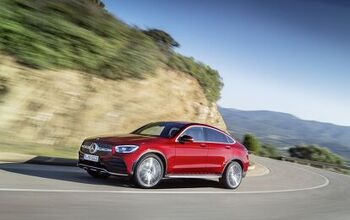
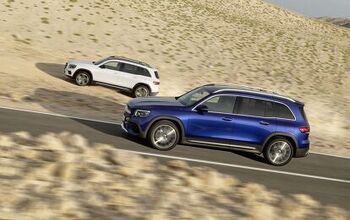
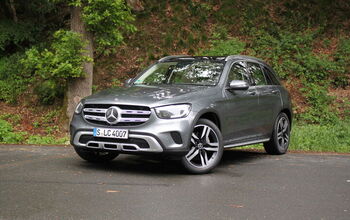
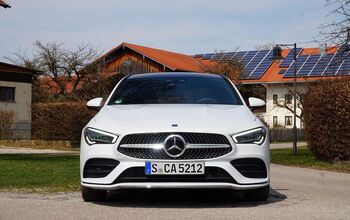
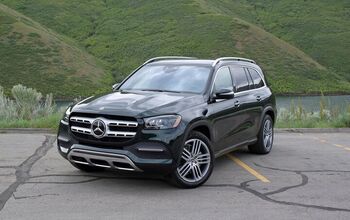











Comments
Join the conversation